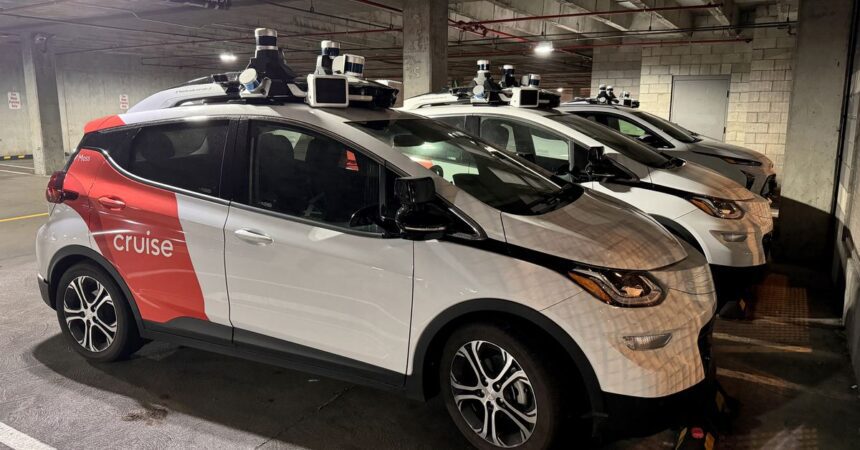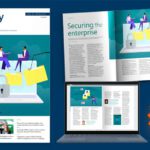The latest woes of robotaxi firm Cruise spotlight many fascinating points presently plaguing the autonomous car business, together with points with transparency and public belief.
How are we purported to entrust our lives to those firms – and certainly, you place your life within the fingers of an organization while you drive their driverless automobiles – when they don’t see match to launch all the knowledge we we’d like. higher perceive expertise?
Final month, California Division of Motor Autos suspended Cruise’s license function a robotaxis after a Cruiser hit lady who was thrown into path by a hit-and-run driver. The driverless Cruise car ran over her, stopped briefly, then dragged her 20 toes whereas onto the sidewalk, inflicting her critical accidents.
How are we purported to belief these firms with our lives?
In response, Cruise has grounded its fleet nationwide whereas he investigates what went incorrect. The corporate’s board of administrators employed an out of doors legislation agency and expertise consultants to evaluate its response to the incident.
One of many questions seems to be whether or not Cruise hid key proof from the DMV. The division says the corporate confirmed video of his automobile all of the sudden braking and stopping, however didn’t present footage of the sufferer dragging the sufferer as she stopped on the sidewalk. In its assertion on the suspension, the DMV alleges that Cruise data ‘distorted’ associated to the security of its autos. However Cruise disputes that declare, arguing that she confirmed the complete video to the DMV.
Actually, Cruise is in a troublesome scenario. His car was very clearly within the incorrect place on the incorrect time. A human driver (who has but to be apprehended, regardless of the abundance of video proof of the incident) dedicated against the law for which, paradoxically, the autonomous car bears many of the duty. However tragically, the incident now permits the general public to raised perceive how these autos work. And that should not be the case.
Final week, THE New York Instances revealed a narrative about Cruise’s response to the suspension and the way the corporate’s aggressive and demanding mission – with assist from dad or mum firm Basic Motors – could have contributed to the present scenario. Close to the tip of the story, reporters Tripp Mickle, Cade Metz and Yiwen Lu posit an fascinating knowledge level: Cruise workers “intervene” in firm autos each 2.5 to 5 miles.
In an enchanting twist, Cruise CEO Kyle Vogt responded to the Instances historical past – not within the Instances himself however in a remark to an article about Pirate Information about Instances story just a few days after its launch.
“Cruising AVs (autonomous autos) are remotely assisted (RA) 2-4% of the time on common, in complicated city environments,” Vogt wrote. “It is already low sufficient that there is not an enormous monetary profit to optimizing additional, particularly given the utility of letting people evaluate issues in sure conditions.”
Other than the extraordinarily 2023 nature of how this remark was revealed, Vogt’s offhand affirmation Instances’ reporting, whereas including further context about distant help, is extraordinarily fascinating for a variety of causes. To start with, that is extra data than we often get from Cruise, who has a repute for being very personal about his operations.
“Cruise AVs (autonomous autos) are remotely assisted (RA) 2 to 4% of the time on common”
All autonomous car firms working in California are required to report the variety of miles pushed, variety of autos, and variety of “disengagements,” which nearly all specialists agree is a very nugatory quantity. However past that, AV firms are allowed to function virtually totally in secrecy. And as we are able to see in latest weeks, this can be a main drawback.
“Corporations are likely to solely launch the numbers that regulators power them to report, or that they assume make them look significantly good,” mentioned Philip Koopman, a professor at Carnegie Mellon College who conducts safety analysis. autonomous autos for many years. “That is true for all automakers, not simply Cruise.”
California has the strictest broadcast disclosure guidelines of any state. Most firms that also have automobiles on the highway take a look at there. That is the place Silicon Valley and, subsequently, many of the gifted engineers are positioned. However different states with many driverless automobiles, like Arizona and Texas, have nearly no disclosure guidelines. And which means the one updates the general public will get are by the corporate’s advertising supplies. This isn’t a recipe for constructing public belief.
It is solely when one thing goes incorrect that most of these info and figures seem. It took Uber killing a pedestrian in Tempe, Arizona, in 2018 for us to know extra about the corporate’s lax method to safety or the truth that he disabled the factory-installed automated emergency braking mechanism in his car that would have saved Elaine Herzberg’s life to keep away from conflicts with the autonomous driving system.
“Corporations are likely to solely publish numbers that regulators require them to report, or that they assume make them significantly fascinating. »
At present, one other individual is critically injured and we’re studying new details about the extent of human involvement in decision-making relating to Cruise’s autos. Do not get me incorrect: I am glad Cruise is opening up about how a lot human assist its autos nonetheless want. I simply want it was underneath higher circumstances.
Consultants I spoke with agree that Vogt’s revelations about distant help are fascinating, much less within the context of the incident involving the hit-and-run sufferer and extra with regard to the flexibility of distant help firms to robotic taxis to function a financially savvy service.
“The reported frequency of distant help is no surprise and is one in every of many hidden challenges to the robocall enterprise mannequin,” mentioned Bryan Reimer, a analysis scientist at MIT’s AgeLab and affiliate director from the New England College Transportation Heart. “Till distant help is taken out of the equation, we’re speaking extra a couple of extremely automated system with periodic human intervention versus the dream of an autonomous name.”
It is solely when one thing goes incorrect that most of these info and figures come to mild.
For years, operators of driverless automobiles have touted the dream of driving with out people. However the actuality is that automobiles nonetheless want a human eye – and typically a human hand. And we nonetheless do not know a lot about these distant displays. What number of automobiles does every distant operator monitor at a time? They might not management the automobiles remotely – often known as teleoperation, or by some as “pleasure sticking” – however they assist the automobiles make choices to some extent.
These individuals have to be paid. And if the entire level of driverless automobiles is to take people out of the equation to make them cheaper to function, then the monetary influence of maintaining all these individuals on the payroll begins so as to add up.
“As an alternative of a human driving the car, a human is now doubtlessly assigned to each ‘driverless’ car on the highway,” mentioned Raj Rajkumar, professor {of electrical} engineering at Carnegie Mellon College. “And that distant operator might be paid greater than a traditional taxi driver, which is inflicting issues on the core of the enterprise mannequin proper now.”
That is related data that cities may want when deciding whether or not or to not let driverless automobiles flood their streets. What are the compromises? If robo-taxis take off and human drivers begin to turn out to be unemployed, what would be the monetary impacts? Are we simply robbing Peter to pay Paul?
Once more, we’d by no means have recognized these numbers if Cruise’s Vogt hadn’t felt compelled to answer the Instances’ report. There are not any guidelines requiring Cruise to reveal these numbers – or Waymo, Zoox, Aurora, Motional or another autonomous car firm. Some states have some guidelines, however most have none. And laws that is still blocked in Congress It would not make a lot distinction, even when, by some miracle, it unblocked itself and located its technique to the president’s workplace. The laws, which has been broadly promoted by the tech business, would take away limitations to placing extra driverless automobiles on the highway — with out imposing new disclosure guidelines.
What number of automobiles does every distant operator monitor at a time?
The result’s that driverless automobiles, a expertise that has the potential to dramatically change the way in which we get round, are dropping confidence. Shopper confidence is down for the second 12 months in a row, in keeping with an annual survey carried out by JD Energy. And this at a time when expertise stays out of attain for the overwhelming majority of the nation’s inhabitants. With solely a small variety of deployments in California, Texas and Arizona, most individuals nonetheless aren’t actually impressed. And firms aren’t doing sufficient to unravel this drawback.
Waymo has undoubtedly completed greater than Cruise, accident statistics report And publish in-depth analyzes about how his automobiles examine to human automobiles. The objective is to supply a statistical foundation for his fundamental argument that automobiles pushed by robots can function safer and extra predictably than these pushed by people.
However as Reilly Brennan, normal accomplice at Vans VC, likes to say, autonomous car makers are all on this collectively — prefer it or not. “Every firm’s success is particular person, however their failures are sometimes lumped collectively as if all operators are one firm,” he mentioned. just lately wrotedubbing the sensation WALTER, for “win alone, lose collectively”.
Cruise’s stumbles additionally turn out to be Waymo’s issues. Till an entity steps in to ascertain a transparent authorized and regulatory foundation, this may probably stay an enormous impediment for all firms dreaming of robots directing the highway.











